Mark has been a friend of Dr. Bickmore's YA Wednesday from the early days of the blog. In 2017 Mark wrote about LGBQ Youth in YA Science Fiction with one of his students, Marilena Orfanos. Find it here. In his next post he addressed Middles Grades Graphica. It was an insightful look at the genre and if you still don't have a strong grounding in the YA graphic novel then take a look here. His most recent solo effort was also on the in the graphic novel genre, but focused on the Memoir. Not very long ago, Mark supplied a post with one of his writing partners, Luke Rodesiler. Mark and Luke and been thinking about how coaches are portrayed in sports-related YA literature. Once again, Mark has another interesting post. This time it is about teaching YA literature in course that is open to all interested students and not just intended future English Teachers. Thanks Mark.
Teaching YA Literature to Non-Education Majors
Mark A. Lewis, Ph.D.
Then, I learned about a small detail. While the course is required for all ELA teacher candidates in the secondary program, it also met a general education requirement for all majors across the university. As I reviewed my class roster, I wondered why majors in health sciences, finance, political science, sports and recreation management, and communications would sign up for a YA literature course set in the College of Education. I thought of two reasons: 1) they were avid readers of YA literature and wanted to take a course on the subject, and 2) easy A. I learned quickly that both reasons were accurate, as it was clear on the first day of class that many were well read in popular (think Harry Potter and The Hunger Games series) YA literature yet, as embodied by a question from a finance major—“What is grading like in this course?”—an easy A was on at least one student’s mind.
Initially, I promised Steve a guest post featuring the ELA teacher candidates who took the course (who only represented a quarter of the group) writing about their experiences with YA literature throughout the semester. Yet, due our changing circumstances this semester that task seemed unreasonable considering how stressed my teacher candidates have been about just meeting the minimum expectations for finishing the semester from a distance. So, I decided to take this opportunity to reflect on what it was like teaching a YA literature course to non-majors while also attending to the needs of the future teachers in the room.
The Course
In terms of reading YA literature, I included two assignments to broaden their reading experiences yet leverage their personal reading interests. First, everyone joined a literature circle and read five assigned selections, and I will introduce those books in the next section. They read outside of class and I provided time in class for the circles to meet and talk about what they are reading. Each week, I asked that each circle create a Lit Circle Artifact, sometimes as a group and sometimes individually, that related to the weekly topic and in-class discussion, and many of these tasks presented a possible instructional task that could be used in a secondary classroom. Second, each student had to create a Thematic YA Literature Text Set in which they chose a theme that connected four selections—one aimed at middle level readers, one aimed at high school readers, one graphic novel, and one open selection. They researched how their theme has been discussed within YA scholarship, wrote a review for each selection, and created a roundtable handout to present in class. I have used both these activities previously in my courses and they both worked well…with education majors.
Literature Circle Selections
Will’s brother, Shawn, has been murdered and the neighborhood code insists that he must avenge his brother’s death. Through a series of poems, the reader follows Will as he rides his building’s elevator grappling with his decision to follow the rules of revenge. Garnering numerous honors, everyone should read this book.
Bone Gap by Laura Ruby
Finn witnesses the abduction of Roza but cannot remember the face of the man that took her. He wants to find her and discover what evil she was trying to escape. A thought-provoking story set in a unique world.
The Miseducation of Cameron Post by Emily M. Danforth
Cameron loses her parents in a car accident and is forced to live with her aunt Ruth. When Ruth discovers Cameron’s feelings toward another girl, she reacts in an extreme way and takes drastic action to “fix” her. This novel is intense and a worthy read.
Soupy Leaves Home by Cecil Castellucci (Author) and Jose Pimienta (Illustrator)
Set in the 1930s, Soupy has left her home to escape an abusive father and joined a group of hobos who are riding the rails. She meets Ramshackle who mentors her during their travels. A fantastic graphic novel with a compelling tale and stunning artwork.
Grasshopper Jungle by Andrew Smith
Andrew Smith’s tagline is “keep YA weird” and this novel meets that goal. Austin has romantic feelings for everyone, including his best friend, Robby, and his girlfriend, Shann. He is confused about these feelings; then, an army of praying mantises invades the world.
A black youth, Tariq, is shot and killed by a white bystander during a supposed robbery. Using multiple narrators, Magoon presents the perspectives on the shooting from several of Tariq’s relatives, community members, and outsiders. The story reveals the complicated issues of race and gun violence in our society.
Exit, Pursued by a Bear by E. K. Johnston
Hermione Winters, captain of the high-profile cheerleading squad at her high school, is entering her senior year and looking forward to the year as a senior and captain. The story begins with Hermione and her teammates enjoying the annual summer cheerleading camp, but her life takes a tragic turn when she is sexually assaulted at the closing social.
I’ll Give You the Sun by Jandy Nelson
Noah and Jude were inseparable twins both with creative artistic talent. When their family is disrupted with tragedy, they end up barely speaking. The twins’ story is captivating and Nelson’s prose is as artful as Noah’s and Jude’s talent.
Crush by Sveltlana Chmakova
In the graphic novel selection for this literature circle, Chmakova tells the story of Jorge who is a confident middle school student. Yet, he has a crush on a girl that erodes that confidence when she is around him and his friends. This novel, however, is more than a “boy meets girl” tale; rather, it involves how individual decisions have consequences that affect others.
The Ghosts of Heaven by Marcus Sedgwick
Told in four quarters, Sedgwick brings together four seemingly unrelated stories from different moments in time that explore the connectedness of the human experience. The metaphors of spirals and helices push readers’ to make thematic connections across the four stories.
Successes and Challenges
The primary challenge I faced were the strained in-class literature circle discussions. When I have employed literature circles in my education courses, it was enough to group ELA teachers together, ask them to talk about the book, and they immediately began discussing the story, if they would teach it and/or how they would teach it, and what secondary students might think about reading the story. The discussions did not follow that pattern, which, upon reflection, I should have known they would not have since not only were these students non-education majors, they were also non-English majors. So, they did not have the tools or desire to discuss the literature. A tough lesson to learn since I often tell my ELA preservice teachers to think about student apathy or disinterest in literature when designing lessons. The other main challenge was helping students choose the texts for their Thematic YA Literature Text Set. Despite reading and discussing the history and definitions of YA literature, students submitted lists with both children’s and adult selections. We also discussed places to find high-quality selections, such as award lists, yet many of their selections lacked the literary merit of the books I chose for their literature circles. It became clear that many were simply choosing books they had read in middle and high school, and were awkwardly fitting them into a loose theme. Their selections did lead to some interesting discussions about why they had trouble identifying high-quality YA literature and I wanted to provide choice to raise engagement, but perhaps I should have pre-identified possible selections for several themes. I also think I did not do enough to support the ELA teacher candidates. Although we spent a third of the course on teaching YA literature, it still felt like I taught a literature course, not an ELA pedagogy course.
Closing Thoughts
I appreciate Steve providing the space for this type of reflective scholarship on teaching and learning, and for any reader who has advice to share related to teaching YA literature to non-majors.

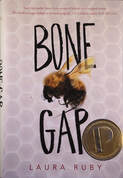
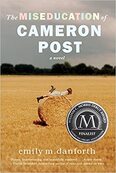
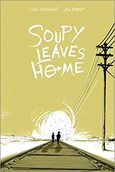
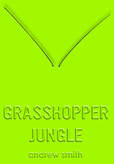
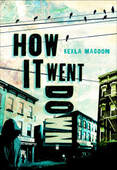
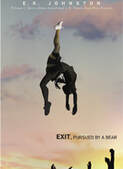
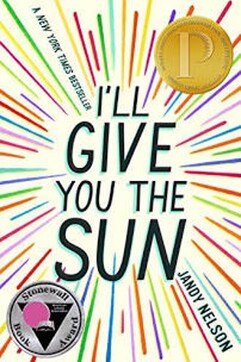
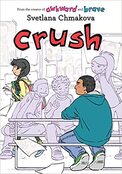
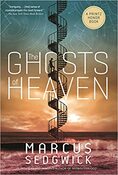

 RSS Feed
RSS Feed